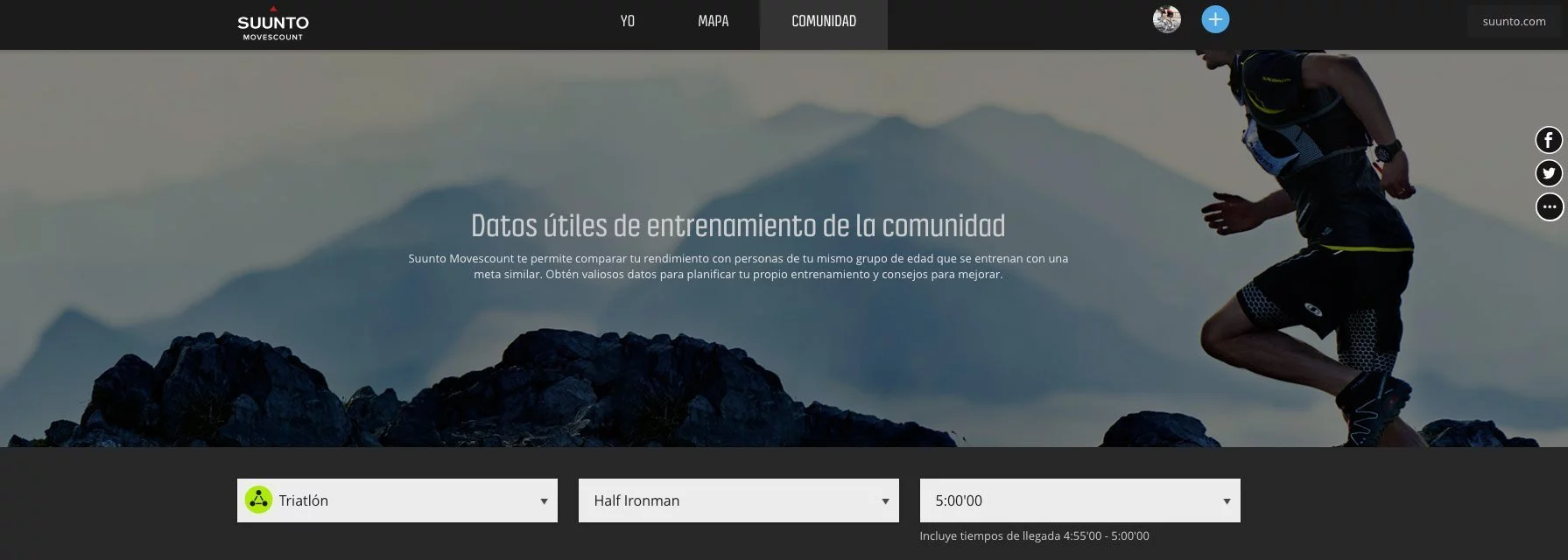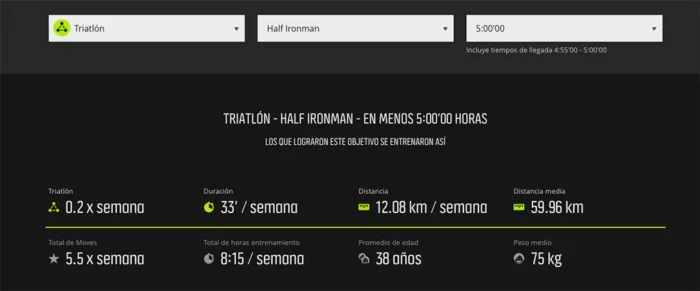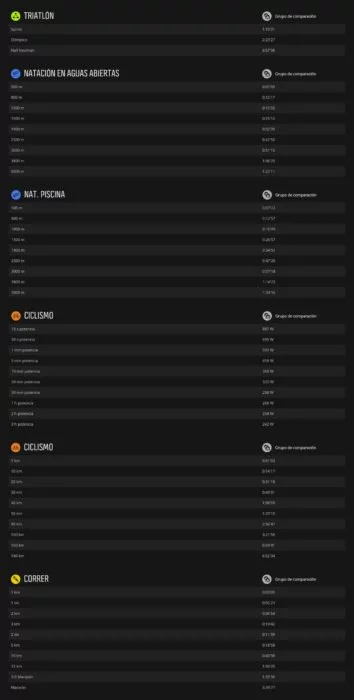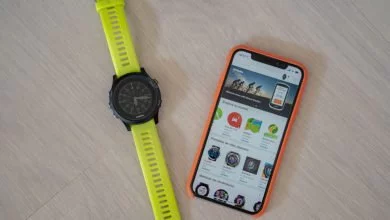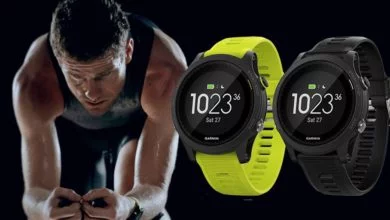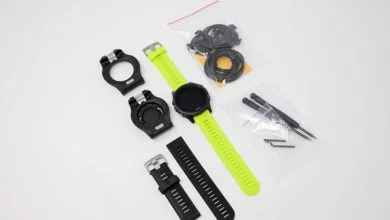Suunto da una de cal y una de arena. Tras el repaso que hice ayer de la situación actual del Spartan, hoy Suunto presenta la nueva función que ha añadido a Movescount. Bautizada como Training Insights, esta nueva funcionalidad analiza los millones de Moves almacenados en los servidores de Suunto para hacer análisis y determinar qué entrenamiento ha seguido cada atleta para alcanzar un objetivo determinado.
No hay que tomárselo como un plan de entrenamiento, porque no lo es en absoluto. Pero sí es un buen ejemplo para saber a qué te tienes que enfrentar para alcanzar un objetivo determinado, tanto de prueba concreta como de tiempo objetivo.
Esta función está disponible para todo el mundo, no sólo para el usuario de Suunto. Cualquiera puede consultar los datos, tenga o no una cuenta de usuario en Movescount. Son muchos los deportes por los que podemos «preguntar». Carrera en asfalto o de montaña, carrera vertical, ciclismo, triatlón o incluso potencia de ciclismo (aunque sin tener datos de peso este último aspecto no es muy útil).
El procedimiento de análisis de datos por parte de Suunto es el siguiente: identifican atletas que hayan realizado alguna prueba de las que especifica a la hora de seleccionar los datos y analiza su entrenamiento de las últimas 15 semanas. Pero no de todos los que hayan corrido una competición determinada (como una maratón), sino sólo de aquellos que hayan terminado en el tiempo objetivo que hayas seleccionado. Y eliminando además también aquellos usuarios que no tengan un mínimo de entrenamientos antes de correr una maratón (por que cambie frecuentemente de dispositivo o porque acaba de comprarse un reloj Suunto).
La información que puedes extraer te sirve para hacerte una idea de cómo han entrenado otros atletas para alcanzar el objetivo que tu persigues. No sólo hablo de poder predecir un tiempo, sino saber si con tu ritmo de vida tienes tiempo para, por ejemplo, preparar un Ironman terminando por debajo de 10 horas.
Suunto Training Insights
Así es como verás todos los datos al acceder a la sección de Training Insights. De momento te facilito la captura completa, y luego cambiamos de ejemplo y vamos sección por sección.
Es decir, puedes conocer distancias y número de entrenamientos, cuántas horas invertir a lo largo de la semana o qué rangos de frecuencia cardíaca han estado presentes. Es decir, la intensidad de los entrenamientos. Por último una tabla comparativa de tiempos que te puede servir para extrapolar. Así que si tu mejor marca en media maratón es de 1:45, intentar un registro de 3:40 en maratón es ser bastante optimista. Por lo tanto al compararte con otros, te puede ayudar a calcular cuál puede ser tu ritmo objetivo.
Pero vamos a ver cada una de las secciones por separado, usando otro ejemplo diferente y que además me ayuda a destacar otra cosa que hay que tener en cuenta. Veamos datos para intentar asaltar un triatlón de media distancia en menos de cinco horas.
Lo primero que puedes ver es que la indicación de deporte es un poco confusa; porque al involucrar natación, ciclismo y carrera, evidentemente hay pocos Moves de triatlón realizados en esas 15 semanas. Pero puestos a hacer elucubraciones… también permite saber que no es común introducir una competición de distancia más corta en ese último tramo de preparación. Así que no es habitual hacer alguna competición sprint u olímpico previo para preparar la competición de media distancia.
Pero los números importantes son los que podemos ver debajo. Intentar ese objetivo nos puede requerir hacer entre 5 y 6 sesiones de entrenamiento semanales, con más de 8 horas de entrenamiento. Así que te tengo una mala noticia… si ahora mismo estás entrenando 5 horas para hacer olímpicos no va a consistir sólo en alargar un poquito la salida de los domingos.
En la siguiente sección puedes ver cómo es la intensidad en semanas anteriores. Pero no sólo intensidad, también volumen, que se puede apreciar cómo aumenta a partir de la semana 7 de forma progresiva a medida que se acerca la fecha de carrera; siendo la semana anterior a la carrera la de «tapering».
En la distribución por deporte se puede ver claramente cómo el triatleta dedica más tiempo al ciclismo. Lo cual es lógico, pues es lo que más tiempo toma durante una carrera. También parece que la media es dedicar un sólo día para entrenamiento de natación. Atención a la importancia que le dan a los otros deportes, que generalmente suelen ser de fortalecimiento. Suele ser el gran olvidado en cualquier plan de entrenamiento. Que sirva como un recordatorio más.
Por último, en triatlón la vista de tiempos en otras disciplinas es mucho más amplia. De nuevo, estos datos ayudan un montón si es tu primera competición en la distancia. Anteriormente hemos visto algo similar en los tiempos de carrera estimados de Garmin (a partir de la estimación de VO2Max) pero esto es mucho más útil. No sólo porque son registros reales con los que te puedes comparar, sino porque las cifras de Garmin son sólo para carrera, mientras que lo que podemos obtener con el «big data» de Suunto es para muchos más deportes.
En el ejemplo que estoy usando, podrás compararte no sólo con tiempos en otras distancias de triatlón, sino también por deportes individuales.
Lo cual abre mucho más las comparativas, porque puede que seas capaz de hacer un triatlón sprint en 1:10 porque seas muy bueno nadando y te permita coger un buen grupo de bici en T1, pero también debes mirar el resto de datos para poder valorarlo. Tal vez en la bici sin poder ir a rueda tu tiempo no sea tan bueno y, por tanto, buscar bajar de las 5 horas sea demasiado optimista.
Suunto continua haciendo buen uso de todos los datos que ha ido recopilando durante estos años. Primero fue con los mapas de calor y ahora con la nueva función de Training Insights. Y en ambos casos accesible a cualquiera, independientemente de que sea usuario de Suunto o no.
Indudablemente, una buena fuente de información.
¡Gracias por leer!

